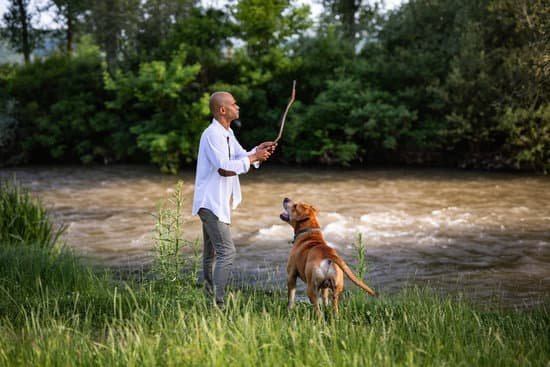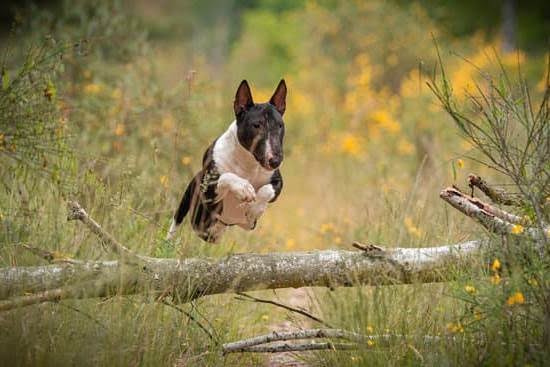Clicker dog training has become increasingly popular in recent years as a positive reinforcement method for teaching dogs new behaviors and commands. This training technique utilizes a small handheld device, known as a clicker, to mark desired behaviors and communicate to the dog that a reward is coming. In this section, we will explore the fundamentals of clicker training, including its principles and how it can benefit both dogs and their owners.
One of the key concepts behind clicker training is its basis in operant conditioning, which focuses on shaping behavior by using positive reinforcement. The sound of the clicker serves as a precise marker to signal to the dog that they have performed the correct action. Through consistent repetition and rewarding of these actions, dogs learn to associate the sound of the click with earning a treat or praise.
To successfully implement clicker training, it is crucial for dog owners to understand how dogs learn and process information. By grasping the science behind canine learning processes, such as classical conditioning and associative learning, trainers can effectively utilize clicker training to modify their pet’s behavior positively.
With a focus on laying down foundational knowledge about clicker dog training, this section aims to equip readers with an understanding of why and how this method can be beneficial for transforming their dog’s behavior. By delving into these fundamental principles, readers will be better prepared to implement clicker training techniques in subsequent sections as they progress through their journey towards successful dog obedience.
The Science Behind Clicker Training and How Dogs Learn
Clicker training is a popular and effective method of dog training that is based on the principles of operant conditioning. This section will delve into the science behind clicker training and how dogs learn through this method.
Operant Conditioning and Clicker Training
Operant conditioning is a type of learning in which behavior is strengthened or weakened by the consequences that follow it. Clicker training utilizes the concept of positive reinforcement, where desired behaviors are rewarded with a click sound followed by a treat or other reward. The click serves as a clear and consistent signal to the dog that they have performed the correct behavior.
How Dogs Learn Through Clicker Training
Dogs are able to learn through clicker training because it allows for precise timing and clear communication. When a dog hears the click, they understand that they have done something right and can expect a reward. This immediate feedback helps dogs make the connection between their actions and the consequences, leading to quicker and more effective learning.
The Role of Classical Conditioning
In addition to operant conditioning, clicker training also involves classical conditioning, where the sound of the click becomes associated with positive outcomes for the dog. Over time, hearing the click triggers feelings of anticipation and pleasure in the dog, making them eager to engage in behaviors that lead to receiving that rewarding sound.
Understanding these fundamental principles of operant and classical conditioning provides insight into why clicker training is such an effective method for shaping canine behavior. By incorporating these scientific concepts into your approach to clicker dog training, you can maximize your success in teaching your furry friend new skills and behaviors.
Choosing the Right Clicker and Timing for Training Success
Clicker dog training is a highly effective method for teaching your furry friend new behaviors and commands. While the clicker itself may seem like a simple tool, choosing the right one and understanding the timing of when to use it are crucial for successful training sessions.
When selecting a clicker for your dog, it’s important to consider the noise level and ease of use. Some clickers produce a louder sound, which can be beneficial for outdoor or noisy environments.
However, if you plan to do most of your training indoors or in quiet settings, a softer clicker may be more suitable. Additionally, choose a clicker that feels comfortable in your hand and is easy to operate so that you can focus on your dog during training sessions.
Timing is also key in clicker dog training. The moment your dog performs the desired behavior, you must immediately follow it with a click to mark the action as correct. This precise timing communicates to your dog exactly what they did right and increases the likelihood of them repeating the behavior in future training sessions.
Incorporating both the right clicker and impeccable timing into your training routine will set you and your dog up for successful learning experiences. As you continue with clicker dog training, pay attention to how your furry companion responds to different clickers and adjust accordingly for optimal results.
| Clicker Considerations | Timing Tips |
|---|---|
| Consider noise level and ease of use when choosing a clicker | Immediately follow desired behavior with a click |
| Select a comfortable and easy-to-operate clicker | Communicate exactly what action is correct to your dog |
Step-by-Step Guide to Clicker Training for Basic Commands
Clicker training for basic commands is a fantastic way to build a strong foundation for your dog’s obedience and behavior. Below is a step-by-step guide to help you get started with clicker dog training:
- Choose the right treats: Find small, soft, and tasty treats that your dog loves. These will serve as positive reinforcement during training.
- Introduce the clicker: Get your dog accustomed to the sound of the clicker by clicking and treating several times without any specific commands.
- Pair the click with a command: For example, if you are teaching your dog to sit, say “sit,” wait for your dog to do so, then click and treat immediately.
- Consistency is key: Be consistent with using the clicker and offering treats every time your dog correctly follows a command. This helps in reinforcing the desired behavior.
Once your dog has mastered these basic commands, you can start incorporating more advanced techniques into their training.
- Generalize commands: Once your dog understands a command in one environment, practice it in different locations to ensure they understand it everywhere.
- Add distractions: Gradually introduce distractions, such as other people or pets, while practicing commands to teach your dog to focus on you despite potential disruptions.
- Shaping behaviors: Use the clicker to shape more complex behaviors by rewarding incremental progress towards the desired action. This can be especially useful for teaching tricks or complex tasks.
Remember that patience and consistency are essential for successful clicker dog training. With dedication and practice, you’ll see impressive results using this positive reinforcement method.
Advanced Clicker Training Techniques for More Complex Behaviors
Shaping
One of the most powerful techniques in clicker dog training for complex behaviors is shaping. Shaping involves breaking down a desired behavior into small achievable steps.
The trainer then reinforces each small step until the entire behavior is formed. For example, if you want your dog to retrieve an item from a specific location, you can shape this behavior by reinforcing your dog for looking at the item, then moving towards it, then touching it, and finally picking it up and bringing it to you.
Chaining
Chaining is another advanced clicker training technique that involves linking together multiple behaviors in a sequence. This is especially useful for training complex routines or tasks. For instance, if you want your dog to perform a series of agility obstacles or tricks in a specific order, chaining allows you to reinforce each behavior in the sequence until the entire chain is completed successfully.
Adding Verbal Cues
Once your dog has mastered basic commands through clicker training, you can start adding verbal cues to further enhance their learning. By introducing a verbal command along with the clicker signal, your dog will eventually learn to respond to the verbal cue alone. This advanced technique allows for more precise communication with your dog and opens up endless possibilities for teaching complex behaviors.
By incorporating these advanced clicker training techniques into your training sessions, you can challenge your dog to learn more complex behaviors while strengthening your bond and communication with them. With patience, consistency, and the right timing, clicker dog training can help you achieve amazing results in shaping your pet’s behavior. Whether it’s performing elaborate tricks or mastering intricate tasks, clicker training provides a positive and effective method for teaching advanced behaviors to dogs of all ages and breeds.
Troubleshooting Common Clicker Training Challenges
Clicker dog training can be an effective way to teach your furry friend new behaviors or commands. However, just like any other training method, it can come with its own set of challenges. Here are some common issues that dog owners may encounter when using clicker training and how to troubleshoot them:
1. Over-clicking: One common mistake in clicker dog training is over-clicking, which can lead to confusion for your pup. If you find yourself clicking the clicker too often or at the wrong times, try to be more deliberate and precise with your timing. This will help your dog associate the click with the exact behavior you want to reinforce.
2. Clicker anxiety: Some dogs may become anxious or fearful of the sound of the clicker. If this is the case for your pet, try using a quieter clicker or muffle the sound by placing tape over the device. You can also pair the sound of the clicker with treats to create a positive association.
3. Inconsistency in rewards: Another challenge in clicker training is inconsistency in rewarding good behavior. Make sure to always follow up the click with a treat or other reward, so your dog understands that they have done something right. Consistency is key in reinforcing desired behaviors.
It’s important to remember that every dog is unique, and what works for one may not work for another when it comes to clicker training. By identifying and addressing these common challenges, you can improve your success with clicker dog training and strengthen the bond with your furry companion on this journey of learning and growth.
Real-Life Success Stories
Clicker dog training has been proven to be an effective method for teaching dogs new behaviors and reinforcing positive actions. Many dog owners have shared their success stories with clicker training, demonstrating the impact it has had on their pets’ behavior and overall well-being.
One success story comes from a dog owner who used clicker training to help their rescue dog overcome fear and anxiety. By using the clicker to mark and reward moments of calm and confidence, the dog slowly learned to trust and feel more secure in different situations. Over time, the dog’s behavior improved significantly, making everyday activities less stressful for both the pet and its owner.
Another inspiring success story involves a clicker-trained therapy dog that brings comfort and joy to hospital patients. Through clicker training, the dog learned to perform various tricks and provide emotional support to those in need. The positive reinforcement from the clicker not only helped the therapy dog learn new skills, but also deepened the bond between the animal and its handler.
Furthermore, a clicker-trained service dog has made a difference in the life of an individual with disabilities, providing assistance with daily tasks and enhancing their independence. The precise marking and rewarding of desired behaviors through clicker training allowed the service dog to perform complex tasks reliably, resulting in improved quality of life for its owner.
These real-life success stories demonstrate how clicker training can make a meaningful impact on dogs’ lives, from overcoming fears to providing valuable services to humans in need.
| Success Stories | Impact |
|---|---|
| Rescue Dog | Overcoming fear and anxiety |
| Therapy Dog | Bringing comfort to hospital patients |
| Service Dog | Assistance with daily tasks for individuals with disabilities |
Clicker Dog Training Resources and Tips for Continued Success
In conclusion, clicker dog training is an effective and science-based method for teaching dogs new behaviors or refining existing ones. By using a clicker as a conditioned reinforcer, paired with positive reinforcement, owners can successfully communicate with their pets in a way that is clear and precise. Understanding the basics of clicker training, the science behind how dogs learn, and choosing the right clicker and timing are crucial elements for successful training.
As mentioned earlier, clicker dog training requires the right timing to be effective. The sound of the click should accurately pinpoint the exact moment when the desired behavior occurs. Additionally, patience and consistency are key to seeing results with this training method. Owners must also be willing to invest time and effort into understanding their dog’s individual learning style and adjusting their approach accordingly.
Finally, it’s important for owners to seek out resources and tips for continued success with clicker dog training. Many professional trainers offer workshops or online courses on this subject. Additionally, there are numerous books, articles, and online communities dedicated to sharing success stories and troubleshooting common challenges associated with clicker dog training. By staying informed and open to learning new techniques, owners can ensure that they continue to see progress in their dog’s behavior through clicker training.
Frequently Asked Questions
Is a Clicker Good for Dog Training?
Yes, a clicker can be an effective tool for dog training. It allows for precise timing of marking desired behaviors, making it easier for the dog to understand what is being rewarded. It also helps in creating clear communication between the trainer and the dog.
What Does a Clicker Do to a Dog?
A clicker serves as a distinct sound marker that signals to the dog that they have performed a behavior correctly and will receive a reward. It helps in reinforcing good behaviors by associating the sound with positive reinforcement, making it easier for the dog to understand what is being rewarded.
What Age Should You Start Clicker Training?
Clicker training can be started at any age, but it is important to consider a dog’s developmental stage when beginning training. For puppies, clicker training can start as early as 8 weeks old, focusing on basic commands and socialization.
For adult dogs, it’s never too late to start clicker training as long as they are mentally and physically capable of learning new behaviors.

Welcome to the blog! I am a professional dog trainer and have been working with dogs for many years. In this blog, I will be discussing various topics related to dog training, including tips, tricks, and advice. I hope you find this information helpful and informative. Thanks for reading!





